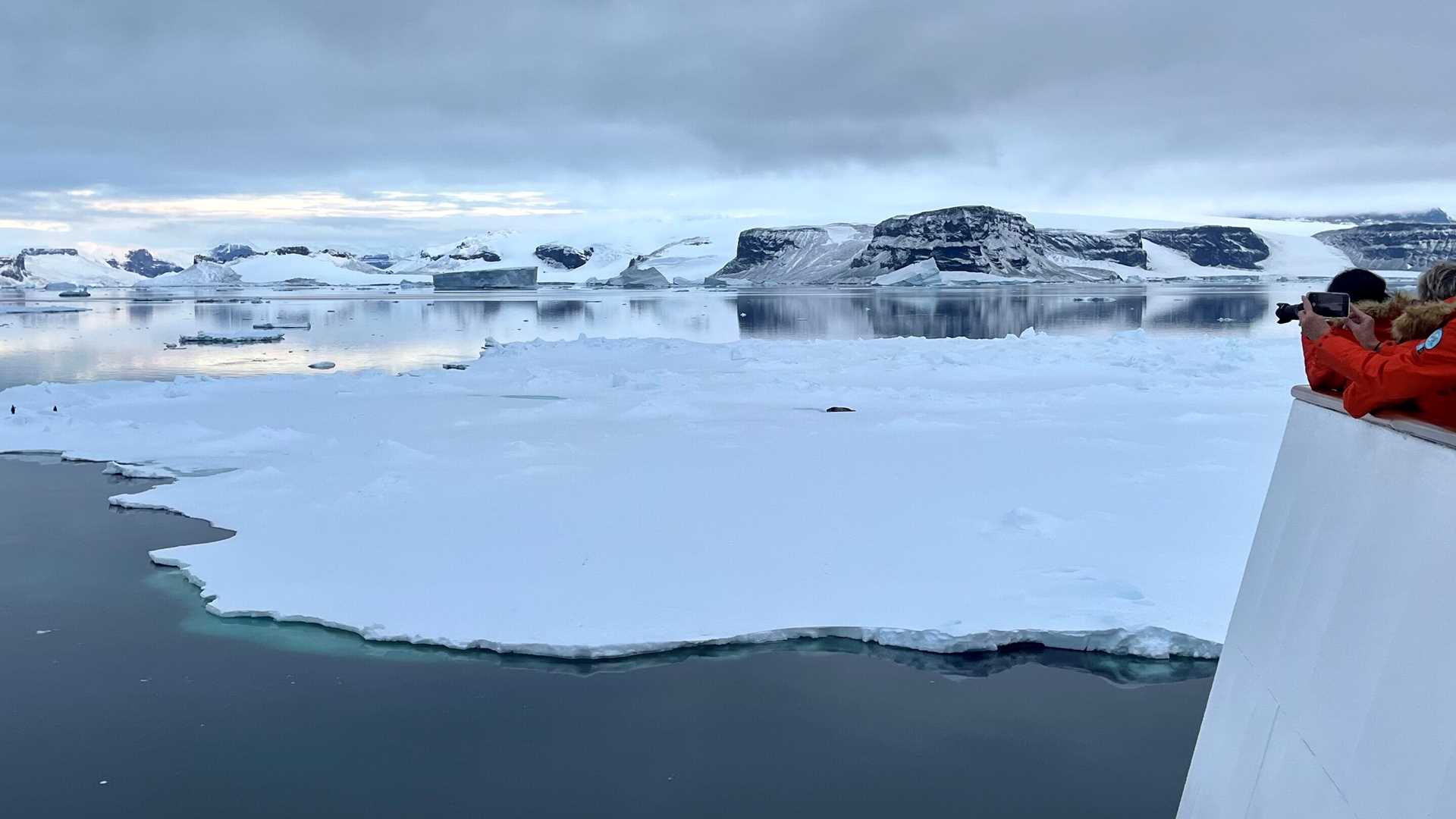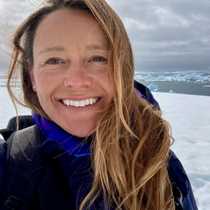An expedition is defined not by hardship or remoteness but by a purpose of exploration. On National Geographic Explorer, we welcome redirects to even the most thoughtfully made plans, necessitated by weather, wildlife, or ice conditions, as they bring new opportunities to explore!
The intention was to begin the day with a landing to observe the unique geology of James Ross Island, an area with one of the highest accessible concentrations of fossils on the western Antarctic Peninsula. Instead, we were awoken in the early hours of the morning by an announcement that two emperor penguins were spotted en route. We quietly observed these recently fledged juveniles on a patch of sea ice floating on a serene surface. We were surrounded by their reflections, icebergs, and an endless horizon of snowcapped mountains in the distance.
Leaving the penguins to rest, we continued toward our destination and found the bay too full of ice to navigate to the landing. Calm and sunny conditions allowed for kayaking, Zodiac cruising, and a polar plunge. Back on board, we warmed up and shared stories of the unique experiences and encounters from the water – sea ice floes, leopard and crabeater seals, and terns plunge diving.
Continuing north, we spent the afternoon Zodiac cruising among sculptures of ice, porpoising Adelie penguins, and formations of blue-eyed shags. Cockburn Island is a textbook example of a tuya, one of the characteristic volcanic formations of the landscape, formed mostly beneath the sea surface. Guests in Zodiacs had the chance to see National Geographic visiting scientists at work. This voyage of National Geographic Explorer is hosting a marine geoscientist and a hydrogeologist who are collecting water samples and water chemistry data as part of a novel research study on submarine groundwater discharge in Antarctica.







